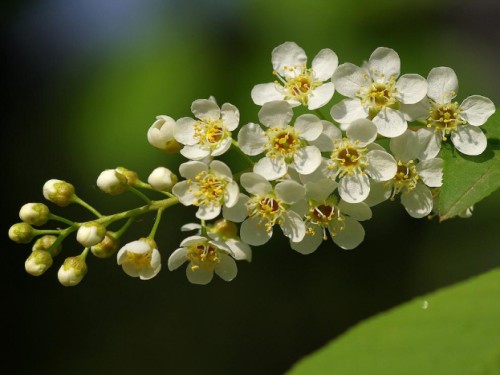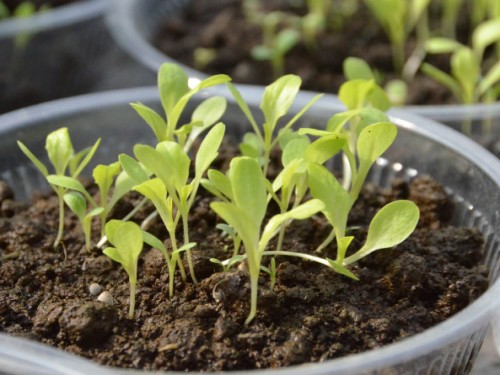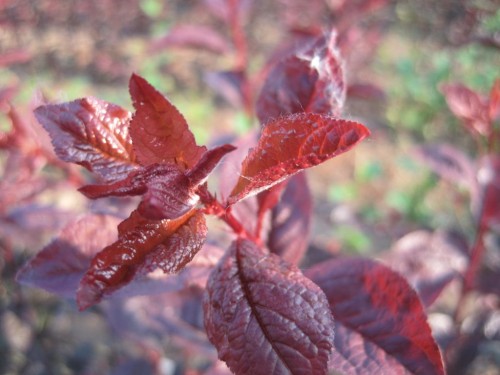Propagation methods of thick plum
Thick plum young leaves bright green, old leaves purple-red, with other tree species, red and green match each other. In gardens and scenic spots, it can be planted alone, in clusters, in groups, or in pieces, or into large color hedges, and large flower bed patterns, and can also be used as secondary street trees on urban roads and landscape trees for greening in residential areas. It is also suitable for lawn, corner, fork road, hillside, riverside, stone side, courtyard, front of building, gate square and so on.

Planting thick plum mainly uses the propagation method of sowing or cutting, the following is a brief introduction to these two methods.
1. Sowing and reproduction
Seed harvest: the seed harvest time is about the middle and last ten days of August in Liaoning area. When the fruit turns black, it can be harvested, soaked in water after harvest, the outer seed coat and pulp are removed by hand rubbing, the seeds are washed with clean water and thoroughly dried in a cool and ventilated place, so as to prevent the seeds from heating, mildew and rot and reduce their vitality.
Seed treatment: the seeds were stored in a cellar of 0-5 ℃. Late autumn choose dry terrain, good drainage, leeward to the sun to dig a pit, pit depth 1.5 meters anti-bottom 15 cm gravel or coarse sand, insert a bunch of grass handle in the middle of the pit in order to ventilation. The pit length and width depends on the number of seeds. Soak the seeds in 40 ℃ warm water for 2 days before storage, then mix the seeds with wet sand at 1:3, place them in the pit until they are 20 cm above the ground, and then backfill 10 cm above the ground. Dig drains around.
Sowing: at the beginning of April of the following spring, the seeds are raised from the pit and placed in a cool place to accelerate germination. When there are 1 stroke 3 seeds exposed, they can be sown. It is better to choose sandy loam with flat terrain, convenient drainage and irrigation, deep soil and loose soil. Sufficient base fertilizer should be applied every 667 meters before sowing. 50kg is appropriate, careful soil preparation for ridges, ridge surface should be flat, and sufficient bottom water should be irrigated. When the water seeps through, the soil dries a little, then pick up the ditch and evenly remove the seeds, with the sowing rate of every 667 square meters. 5 kilograms is suitable. Cover the soil after sowing, the thickness of the cover is 1.5 cm, after the cover is slightly suppressed, and the ridge surface should be kept moist in the future.
2. Cuttage propagation
Thick plum cuttings are easy to take root, and hardwood cuttings are generally used instead of softwood cuttings, because tender wood cuttings have strict requirements on environmental conditions, especially temperature and humidity, and the survival rate of transplanting is not as high as that of hardwood cuttings.
Collection of cuttings. In autumn, thick plum mother strips with strong growth and about 1 cm thick were selected as cuttings.
Storage of cuttings. After picking cuttings, cut the cuttings into cuttings 15 to 20 centimeters long, tie up 100 cuttings into a handful, and put them into the cellar and bury them with sand. The cuttings were cut in the following spring. The cuttings were taken out from the cellar and soaked in clean water for 2 days, then the cuttings were cut upright according to the plant spacing of 15 cm and the row spacing of 25 cm on the whole seedling bed, and then irrigated after cutting to make the cuttings closely connected with the soil and promote rooting and survival.
Time: 2019-06-11 Click:
- Prev

Sowing method and post-germination management of goldfish grass
The goldfish grass not only has a lot of flowers and colors, but also has a long flowering period, which is a very good herb, which is generally sown. The sowing season is the best in spring and autumn, and the flowering season is usually from March to June. In order for flower friends to have a deeper understanding of the goldfish grass, we start from sowing: it takes about 100 days for spring sowing and flowering.
- Next

Propagation technique of Purple Leaf thick Plum
Purple leaf thick plum plays an important role in the landscaping of northern cities and is an excellent greening tree species because of its quick scenery, easy cultivation and long leaf viewing period. Purple leaf thick plum is a very precious tree species with colored leaves, with straight trunk and perfect crown, which should be planted in courtyards, squares and sidewalks.
Related
- Fuxing push coffee new agricultural production and marketing class: lack of small-scale processing plants
- Jujube rice field leisure farm deep ploughing Yilan for five years to create a space for organic food and play
- Nongyu Farm-A trial of organic papaya for brave women with advanced technology
- Four points for attention in the prevention and control of diseases and insect pests of edible fungi
- How to add nutrient solution to Edible Fungi
- Is there any good way to control edible fungus mites?
- Open Inoculation Technology of Edible Fungi
- Is there any clever way to use fertilizer for edible fungus in winter?
- What agents are used to kill the pathogens of edible fungi in the mushroom shed?
- Rapid drying of Edible Fungi

